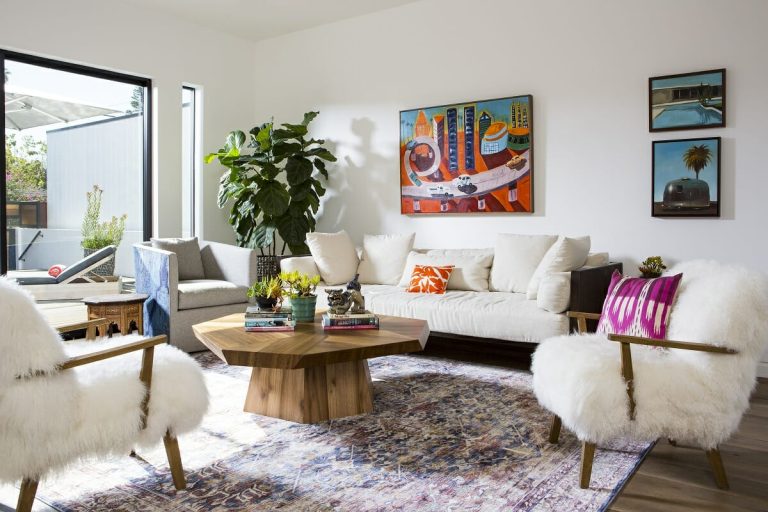Stepping into a well-decorated room can evoke a sense of awe and wonder. The carefully chosen colours, furniture, and accessories combine harmoniously, creating a space that reflects its inhabitants’ unique personalities and tastes. Interior decorating styles play a significant role in shaping the ambience and aesthetics of a room.
They provide a framework for expressing individuality and creating a space that feels like home. This article will explore nine common interior decorating styles, uncovering their distinctive features, influences, and the emotions they evoke. Additionally, it will touch upon the benefits of online interior design courses, allowing individuals to enhance their knowledge and skills in creating beautiful and functional spaces.
Traditional:
The traditional style embraces classic design elements and brings a sense of timeless elegance to a space. It draws inspiration from various periods, such as the ornate details of Victorian-era interiors or the refined simplicity of Colonial homes. Traditional areas often feature rich colours, luxurious fabrics, and furniture with intricate detailing. Dark wood finishes, symmetrical arrangements, and ornate accessories are common characteristics. This style evokes a sense of warmth, familiarity, and sophistication.
Modern:
The modern style is characterized by simplicity, clean lines, and focus on function. It emerged in the early 20th century as a rejection of the ornate details of traditional design. Modern interiors feature open floor plans, minimal ornamentation, and a neutral colour palette. Furniture designs often prioritize functionality and form, showcasing sleek lines and smooth surfaces. This style creates a sense of openness, simplicity, and a contemporary aesthetic.
Contemporary:
This style is often confused with modern style but has distinct features. It represents the design trends and influences of the present time. Contemporary interiors showcase a mix of different styles, materials, and finishes. They embrace bold and unconventional design choices while maintaining a sense of simplicity and sophistication. Neutral colour palettes with pops of bold accents, clean lines, and a focus on natural light are typical in contemporary spaces. This style encourages creativity, flexibility, and a celebration of individuality.
Transitional:
Transitional style finds a balance between traditional and contemporary design. It blends classic elements with more modern touches to create a harmonious and timeless aesthetic. In transitional spaces, one may find a mix of traditional furniture with clean lines, neutral colour palettes with pops of colour, and a combination of different textures and materials. This style creates a sense of comfort, warmth, and versatility.
Scandinavian:
Scandinavian style originates from the Nordic countries and is known for its simplicity, functionality, and connection to nature. It features clean lines, minimal ornamentation, and a neutral colour palette with pops of soft pastels or natural hues. Scandinavian interiors prioritize natural light and use natural materials such as wood and leather. This style creates a sense of calm, coziness, and a connection to the natural world.
Industrial:
The industrial style draws inspiration from urban lofts and warehouses. It celebrates raw and unfinished elements, such as exposed brick walls, concrete floors, and exposed beams. Industrial interiors often feature a mix of metals, distressed furniture, and salvaged materials. Neutral colour palettes with pops of bold accents and functional and minimalistic furniture are standard. This style creates a sense of edginess, authenticity, and a nod to the urban environment.
Bohemian:
This style is characterized by its eclectic and free-spirited nature. It embraces various colours, patterns, and textures from different cultures and eras. Bohemian interiors often feature layered textiles, vintage furniture, and a variety of decorative objects and plants. The colour palette can range from vibrant and saturated to earthy and muted tones. This style encourages individuality, creativity, and a sense of adventure.
Coastal:
Coastal style, also known as beach or nautical style, draws inspiration from the seaside and evokes a sense of relaxation and serenity. It features a light, airy colour palette with shades of blue, white, and sandy neutrals. Natural materials like wicker, rattan, and driftwood are common, along with beach-inspired accessories such as seashells and marine motifs. Coastal interiors create a sense of tranquillity, freshness, and a connection to the ocean.
Mid-Century Modern:
The mid-century modern style emerged in the mid-20th century and remains popular today. It reflects the design aesthetics of the post-war period, characterized by clean lines, organic shapes, and a blend of natural and man-made materials. Mid-century modern interiors feature furniture with sleek silhouettes, bold colours, and geometric patterns. This style creates a sense of retro chic, nostalgia, and a celebration of the past.
Conclusion:
As the exploration of common interior decorating styles comes to a close, it becomes evident that each style carries its unique characteristics and evokes specific emotions. Whether one finds themselves drawn to the timeless elegance of traditional design, the simplicity of modern interiors, or the creativity of bohemian style, the choice of style allows for the expression of individuality and the creation of a space that resonates with personal preferences. By understanding the key features, influences, and emotions associated with each style, one can embark on a journey to transform their living space into a reflection of their unique taste and personality.
For those seeking to further their expertise in design, online interior design courses offer a convenient and accessible way to acquire new skills and knowledge. Whether a beginner or an experienced enthusiast, these courses provide valuable insights and guidance in creating beautiful and functional spaces. So, let creativity soar, explore the world of interior decorating styles, and consider the opportunities that online interior design courses can bring to bring your design aspirations to life.

